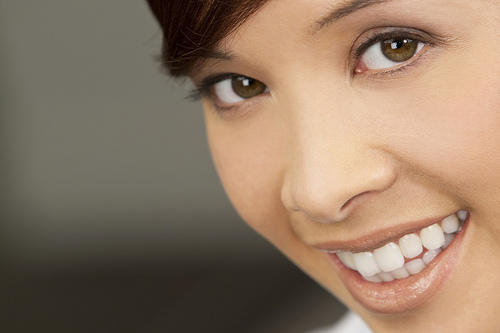October 25th, 2017

Sucking is a common instinct for babies and the use of a pacifier or their thumb offers a sense of safety and security, as well a way to relax.
According to the American Academy of Pediatric Dentistry, the majority of children will stop using a pacifier and stop sucking their thumb on their own between the ages of two and four years of age. Prolonged thumb sucking or use of a pacifier can have dental consequences and needs be taken care of sooner, rather than later.
Many dentists favor pacifier use over thumb sucking because it makes it easier for parents to control and even limit the use of a pacifier. If thumb sucking lingers, the same strategies used to break the baby from using the pacifier can be used for thumb sucking.
Precautions
- Try to find "orthodontically correct" pacifiers, as they may reduce the risk of dental problems.
- Never dip a pacifier in sugar or honey to calm the baby.
- Give your baby a bottle of water at bedtime, never juice.
Dental Complications
Long term pacifier use can lead to an assortment of dental complications including:
- The bottom teeth leaning inward
- The top teeth slanting outward
- Misalignment of the baby’s jaw
The risk of any or all of these things happening is greatly increased if thumb sucking and pacifier use is sustained after the baby’s teeth start to come in.
Breaking the Thumb Sucking and Pacifier Habit
Most toddlers and children will stop sucking their thumb or using a pacifier between the ages of two and four on their own. However, if intervention is necessary here are a few tips to help your child break the habit:
- Slowly decreasing the use of a pacifier can be effective for many children. This method does not work very well with thumb sucking.
- Thumb sucking can be more difficult to break. Dr. Michelle Slezewski and Dr. Paul Engibous may recommend using an over the counter cream that you put on the child’s thumb; it doesn’t taste good and usually does the trick.
- Rewards can also help with the process.
- If these simple commonly used strategies do not work, there are oral devices that will prevent a child from sucking their thumb or a pacifier.
Talk to Dr. Michelle Slezewski and Dr. Paul Engibous and our team, as we have many tricks up our sleeves that will be effective in breaking your child’s thumb sucking or pacifier use.
October 18th, 2017

When it comes to keeping your smile looking its best, good oral hygiene is a must! Good oral health habits should start early and continue throughout your lifetime. Here, Dr. Michelle Slezewski and Dr. Paul Engibous and our team at Pediatric Dental Associates suggest five habits worth adopting that will help keep your teeth healthy:
- Brush and floss regularly. Brush gently at least twice a day, paying special attention to the gum line to rid your mouth of food and bacteria that may lurk in between your teeth. Floss at least once a day. Replace your toothbrush every three to four months or sooner if the bristles are frayed.
- Make regular visits to see Dr. Michelle Slezewski and Dr. Paul Engibous. Regular checkups (twice yearly) will help diagnose any dental problems early on when they can be more easily treated.
- Stop smoking. Did you know smokers are four times as likely as nonsmokers to develop periodontal (gum) disease? Tobacco, whether in the form of cigarettes, pipes, cigars, or chewable tobacco, increases oral and throat cancer risks, and raises the risk for candidiasis, an oral fungal infection. Smokeless tobacco contains sugar, which furthers your risk for cavities.
- Limit your alcohol intake. Heavy drinking dramatically increases the risk of developing mouth and throat cancers.
- Eat healthy. Avoid snacking on foods that contain high levels of sugar or starch. We encourage you to eat plenty of fruits and vegetables, which are known to help stimulate the flow of saliva to re-mineralize tooth surfaces and neutralize cavity-causing bacteria.
To learn more about the habits you should practice in between your visits to Pediatric Dental Associates, or to schedule an appointment, please give us a call today!
October 11th, 2017

Your regularly scheduled dental checkups with Dr. Michelle Slezewski and Dr. Paul Engibous are not just meant to make your smile prettier and healthier. Your mouth’s health has an important impact on your overall physical health as well!
While you may brush your teeth twice a day and even floss, we would like to remind you that dental checkups with Dr. Michelle Slezewski and Dr. Paul Engibous every six months aren’t just about addressing problems and reacting, they are about cavity and gum disease prevention.
In addition to a twice yearly thorough teeth cleaning and polishing at Pediatric Dental Associates, these regular visits help us detect and prevent the onset of tooth decay and gum disease. During your visit, we’ll check the health of your mouth, teeth, gums, cheeks, and tongue. We’ll also check old fillings and restorations, as these can wear away over time from constant chewing, grinding, or clenching.
It’s important to know that the majority of dental problems do not become visible or painful until they are highly advanced. And, unfortunately, serious oral issues are painful and expensive to treat.
While Dr. Michelle Slezewski and Dr. Paul Engibous and our team always strive to provide unmatched dental care for you and your family, we are also committed to your overall wellness as well! A deep cleaning twice a year is the best way to prevent any problems that may have gone unseen. If you are overdue for your next cleaning, please give us a call to schedule an appointment at our Anchorage, AK office!
October 4th, 2017

Recently, multiple studies have concluded that people with sleep apnea, a disorder that causes snoring, fatigue, and dangerous gaps in breathing at night due to throat muscles collapsing, are five times more likely to develop cancer. In fact, one of the studies found that people with the most severe forms of sleep apnea had a 65 percent greater risk of developing cancer of any kind.
Researchers believe this could be due to the body lacking enough oxygen, a condition known as hypoxemia. When people are deprived of oxygen, their bodies react by producing more blood vessels, which can feed cancer cells, and as a result cause tumors to grow and spread.
Approximately 28 million North Americans suffer from sleep apnea, with many cases going undiagnosed. This is due to most cancer patients not mentioning any sleep problems they experience unless their physician asks them.
Patients at Pediatric Dental Associates who suffer from sleep apnea can be treated using continuous positive airway pressure (CPAP) therapy, which produces a stream of air to keep the upper airways open while you sleep. An oral appliance may be another option if CPAP therapy isn’t an option. If you have sleep apnea, Dr. Michelle Slezewski and Dr. Paul Engibous and our team will help you understand all of your treatment options, finding one that suits your needs.
If you think you may have sleep apnea, please give us a call at our Anchorage, AK office to schedule an appointment.




